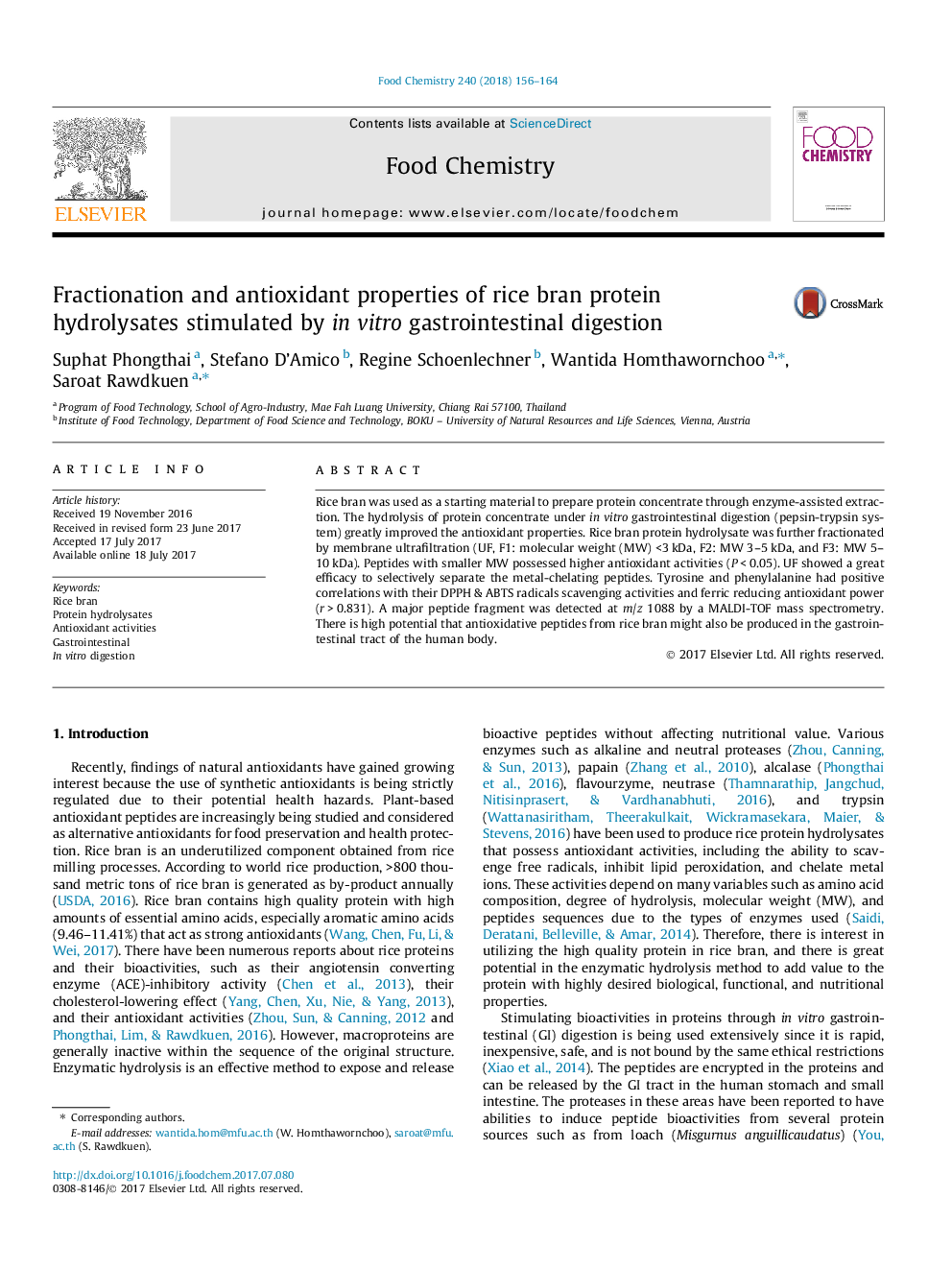| Article ID | Journal | Published Year | Pages | File Type |
|---|---|---|---|---|
| 5132452 | Food Chemistry | 2018 | 9 Pages |
â¢In vitro GI digestion influenced antioxidant activities of rice bran protein.â¢Metal chelator peptide could be separated by membrane ultrafiltration.â¢Peptides with MW <3 kDa possessed the highest free radicals scavenging activity.â¢Anti-free radicals activity was strongly related to Tyr and Phe contents.
Rice bran was used as a starting material to prepare protein concentrate through enzyme-assisted extraction. The hydrolysis of protein concentrate under in vitro gastrointestinal digestion (pepsin-trypsin system) greatly improved the antioxidant properties. Rice bran protein hydrolysate was further fractionated by membrane ultrafiltration (UF, F1: molecular weight (MW) <3 kDa, F2: MW 3-5 kDa, and F3: MW 5-10 kDa). Peptides with smaller MW possessed higher antioxidant activities (P < 0.05). UF showed a great efficacy to selectively separate the metal-chelating peptides. Tyrosine and phenylalanine had positive correlations with their DPPH & ABTS radicals scavenging activities and ferric reducing antioxidant power (r > 0.831). A major peptide fragment was detected at m/z 1088 by a MALDI-TOF mass spectrometry. There is high potential that antioxidative peptides from rice bran might also be produced in the gastrointestinal tract of the human body.
